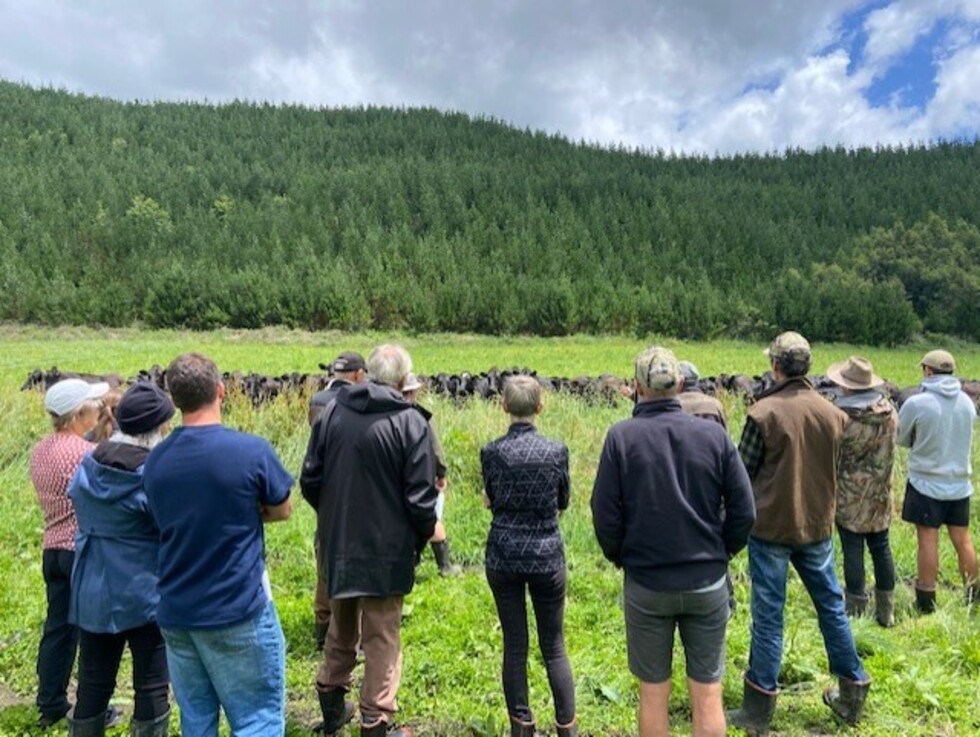Low N Farming Transition Field Day Recap
On the 24th of November, 43 farmers and advisors convened at 280 Mystery Valley Road to discuss the challenges and opportunities of low nitrogen farming systems.
James Burke kindly hosted us on a property which he has transitioned from what was heavily cultivated and fertilized maize growing land, to a mixed forage, beef fattening area. He shared his story of how he transitioned the system to become less reliant on synthetic inputs. The complete notes that were shared with the farmers is here
What was covered:
There was quite a bit of discussion on how we have overfertilized in the past, and how there is a store of phosphorus in our soils that can be mined under the right conditions, meaning good savings, as soil is transitioned from high input to lower input/dependence.
https://vimeo.com/user112145431
Alison Dewes from Wai Kōkopu covered the benefits of mixed forages, and how they fit into conventional systems. She explained how to budget for enough to be in a system to feed a herd adequately. She added how, if milking cows, you can observe extra benefits from starting a mixed forage system in early December. Given that varieties like pasja, clovers, chicory and plantain are ready to eat after around 6-8 weeks, this allows a smooth transition into summer feed as ryegrass begins to suffer heat stress and becomes less palatable around the same time in early December. The benefits of mixed forages are that they are more resilient in hotter temperature and provide an excellent macro and micronutrient balance (especially for calcium and magnesium). They also generate more dry matter than a monoculture of ryegrass from December until April. The areas planted in a system need to be calculated to provide enough feed for the herd as a compliment from December to April. For example, for a herd of 350 cows, this would mean planting an area of at least 21 ha. The added benefits also include – less anti-nutritional factors, such as fungal spores (which causes eczema,) and also endophytes, (staggers and heat Stress). These forages also require significantly less fertiliser inputs, and grow more with less water.
John Burke showed examples of low-cost native planting establishment. The Wai Kōkopu programme is working on a range of trial sites and monitoring them for risks and benefits. The main objective is to establish a programme that is at half the cost of historical planting costs, using forestry grade species to establish ngahere. This, in principle, uses kanuka or manuka as a nursery crop which is then interplanted at year 2-5 with canopy species. The cost of establishment is around 1/3 at $5-7K per ha, rather than $25-30K per ha. However, it is important to note that this is best going into clean sites and weed and pest management for any plantation needs precise focus.
Rachel Mudge covered off the challenges that Wai Kōkopu has observed with high levels of fertilisation in a focus (degraded) catchment. In the little Waihī catchment, for it to get to moderate health, the nitrogen load needs to be reduced by at least 70% from present loads, and this will benefit groundwater as well. Rachel noted that of the nitrogen that has been applied, a lot is also lost past the root zone, to groundwater on young volcanic soils and under our typical management conditions, and given the high cost of urea presently, the optimal use and efficiency should be front of mind for many. See her paper here
Given the significant interest and discussion, we would like to hold more meetings on those farms that are innovating with lower nitrogen practices, and get a better understanding of what the shared learnings can be. We acknowledge this is breaking away from convention, but is a necessary journey, and something that as farmers and growers, we can help each other learn from one another’s experiences.



